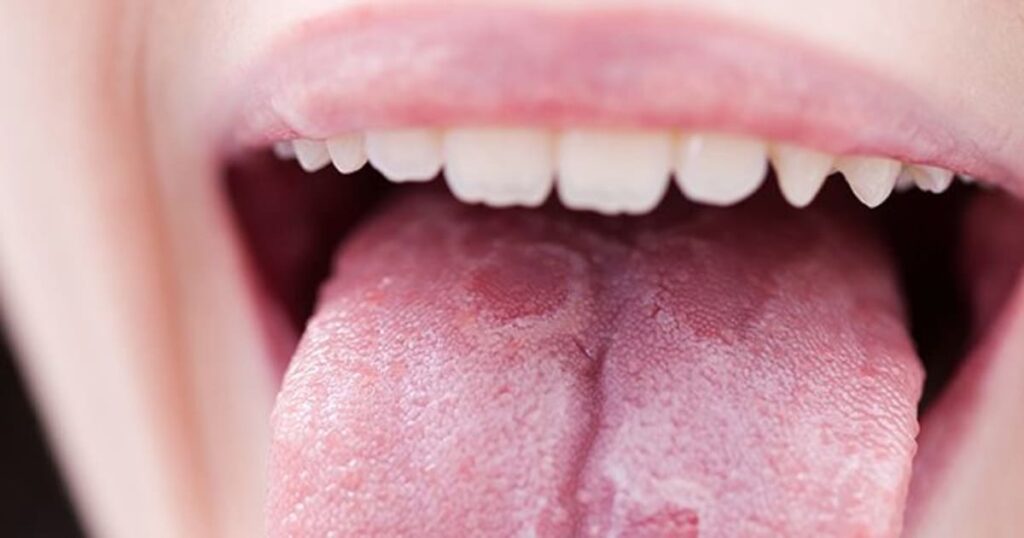Watch our video to learn more
What is a geographic tongue?
Geographic tongue is a common condition. It appears on the top and sides of the tongue, and sometimes on the under-surface. The tongue develops irregular, smooth, red areas, which may look like the outline of a map. There are usually wavy white lines next to the red patches.
You may notice that after a few weeks or months the position of these lines and red patches changes.
Why does it happen?
It happens because of the way the ‘old’ surface of the tongue replaces itself. The top layer of the ‘skin’ of the tongue does not come away evenly. In some parts the ‘skin’ comes away too early and so leaves a red, sore area like a scratch on the skin. In other places the skin stays on too long and looks white.
The red areas, because they are thin, can sometimes become infected with thrush (candida) and so feel sore. Thrush is very common in mouths.
Who does it affect?
It affects all age groups and you may have first noticed it as a child. It is not something that you can pass on to other people but it can run in families. It is not an infection.
What makes it worse?
As the red patches are thin and raw, they tend to be painful when you eat acidic things like citrus fruit or spicy foods – especially chillies. However, these do not make the condition itself worse. You will soon notice which particular foods make the condition more uncomfortable or sore.
Do I need any special tests?
No. Your doctor or dental team can diagnose the problem just by looking at your tongue.
How is it treated?
Unfortunately, there is no treatment. Sometimes treatments for thrush can ease the discomfort (for example, miconazole gel). You can buy these at the pharmacist.
Geographic tongue will never become cancerous, but you will have to learn to live with it. You will need to work out for yourself which foods make it worse, and avoid them.
What should I do if it gets worse in any way?
Ask your doctor or dentist to refer you to the hospital.


